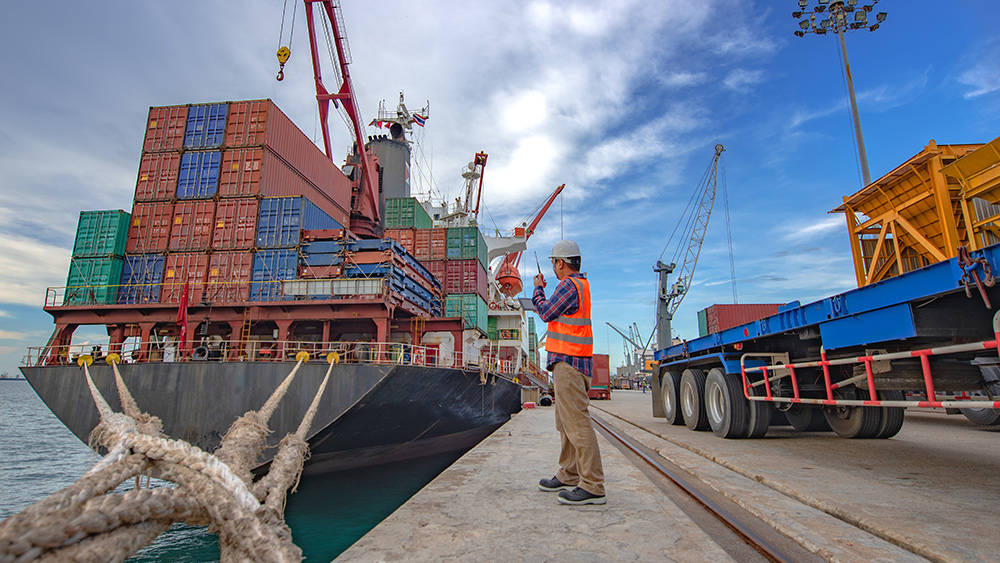 Parler
Parler Gab
Gab
- Trump imposes fees on Chinese-built and -owned vessels at U.S. ports to counter unfair trade practices.
- The phased fee structure aims to boost American shipbuilding and reduce reliance on China.
- China condemns the move, warning of global shipping disruptions and rising costs.
- Critics fear short-term price hikes, but supporters see it as vital to reclaiming U.S. industrial dominance.
A strategic response to Chinese dominance
“Ships and shipping are vital to American economic security and the free flow of commerce,” said U.S. Trade Representative Jamieson Greer. “The Trump administration’s actions will begin to reverse Chinese dominance, address threats to the U.S. supply chain, and send a demand signal for U.S.-built ships.” China currently accounts for nearly 98% of the world’s commercial shipbuilding capacity, a stranglehold the USTR says was achieved through state subsidies, intellectual property theft, and predatory pricing. The new fees aim to level the playing field by increasing costs for Chinese-linked vessels while offering incentives for companies that order American-built ships.Phased implementation to ease disruption
Initially proposed as a per-port fee as high as $1.5 million per call—sparking industry backlash—the final policy was adjusted to a per-voyage model after extensive public feedback. The fees will start at $0 for the first 180 days before gradually rising to $140 per net ton for Chinese-owned ships by 2028. Non-Chinese operators using Chinese-built vessels will face lower fees, starting at $18 per net ton and peaking at $33. Exemptions are granted for Great Lakes shipping, bulk exports (like grain and coal), and U.S.-flagged vessels, mitigating disruptions for critical industries. Additionally, companies can avoid fees entirely by ordering U.S.-built ships of equivalent capacity within three years—a provision meant to spur domestic manufacturing.Broader trade war tensions
The policy further escalates Trump’s long-running economic confrontation with China. Over the past year, tariffs on Chinese goods reached 145%, while Beijing retaliated with 125% duties on U.S. imports. Though Trump hinted at pausing further hikes, stating, “I don’t want them to go higher because at a certain point you make it where people don’t buy,” tensions persist. China’s Commerce Ministry condemned the port fees, warning they would raise global shipping costs and disrupt industry stability. Meanwhile, the World Shipping Council called the move “counterproductive,” arguing it would harm U.S. consumers and fail to revive American shipyards.Short-term pain for long-term gain?
Critics warn the fees could spike shipping costs, echoing pandemic-era freight rate surges. The American Apparel and Footwear Association warned of “devastating consequences,” including higher consumer prices and job losses at smaller ports. Yet supporters argue the short-term sacrifices are necessary to dismantle China’s economic leverage. The administration’s bet hinges on reshoring shipbuilding, a sector where the U.S. produces just five vessels annually compared to China’s 1,700. Whether the policy succeeds may depend on whether American industry can scale up fast enough to meet demand. As the U.S. and China duel for economic supremacy, the ship fees mark another front in a widening conflict. While risks to supply chains and inflation loom, the administration frames the move as a long-overdue correction to decades of unfair competition. With exemptions softening the blow and incentives for domestic investment, the policy reflects a calculated gamble: that America can reclaim its industrial might — one ship at a time. Sources for this article include: CNBC.com CNN.com FreightWaves.comUPS slashes 20,000 jobs, shuts facilities in $3.5B cost-cutting move after Amazon split
By Cassie B. // Share
Grassroots health revolution gains momentum as MAHA movement expands beyond RFK Jr.
By Willow Tohi // Share
China halts exports to U.S.: Empty shelves expected within weeks, warns Health Ranger Mike Adams
By Finn Heartley // Share
Federal probe into UC Berkeley’s concealed Chinese funding reveals national security breach
By Willow Tohi // Share
URGENT REPORT: The China Import Embargo – What to Stockpile Now Before America Runs Out
By Mike Adams // Share
Governments continue to obscure COVID-19 vaccine data amid rising concerns over excess deaths
By patricklewis // Share
Tech giant Microsoft backs EXTINCTION with its support of carbon capture programs
By ramontomeydw // Share
Germany to resume arms exports to Israel despite repeated ceasefire violations
By isabelle // Share










